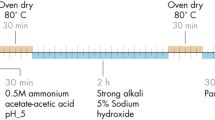Abstract
Eco-pots are made from up to 80% recycled plastic and natural stone, giving their plant pots their unique look and characteristics. But here, 100% biodegradable jute packaging waste and coconut leaf sheath have been used. It is a cost-effective method and environmentally safe. Jute is a sturdy and long-lasting material, and it also possesses absorbent and ventilating qualities. Due to their exceptional features, jute bags are still widely used today in packaging. After packing, the package material is leftover which is reused in some cases but at particular point it is discarded. These waste jute package can be an alternative to plastic pots, growbags, etc. The applications of jute material are vast, and it can be used for home textiles as mats, geotextile applications, mulch mats for agro tech, etc. Sustainable jute eco-pots are the best option for growing sapling as they can be directly introduced to soil because the plant roots can easily penetrate and these will biodegrade and form a part of the soil. The jute fabric also absorbs and retains water well, to help conserve water compared to thin plastic pots. These can also replace the plastic or ceramic pots used for home interiors by doing surface enrichment. Coconut leaf sheath can also be used to make eco-pots as they have naturally woven structure. Due to this, they are used as reinforcement material in composites.
Access this chapter
Tax calculation will be finalised at checkout
Purchases are for personal use only
Similar content being viewed by others
References
Rocío et al., Development of biodegradable pots from different agroindustrial wastes and byproducts. Sustain. Mater. Technol. 30 (2021). https://doi.org/10.1016/j.susmat.2021.e00338
M.R. Evans, J. Kuehny, M. Taylor, Physical properties of biocontainers for greenhouse crops production. HortTechnology 20(3), 549–555 (2010)
S. Nambuthiri, R. Geneve, T. Fernandez, A. Fulcher, A. Koeser, G. Bi, M.R. Evans, G. Niu, N. Pershey, R. Stewart, S. Verlinden, X. Wang, Substrate heat buildup and evaporation rate differs between plastic and alternative one gallon nursery containers. Proc. Southern Nurs. Assn. Res. Conf. 57, 60–62 (2012)
D. Ahuja, A. Kaushik, M. Singh, Simultaneous extraction of lignin and cellulose nanofibrils from waste jute bags using one pot pre-treatment. Int. J. Biol. Macromol. 107(Pt A), 1294–1301 (2018). https://doi.org/10.1016/j.ijbiomac.2017.09.107
A.K. Bledzki, P. Franciszczak, Z. Osman, M. Elbadawi, Polypropylene biocomposites reinforced with softwood, abaca, jute, and kenaf fibers. Ind Crop Prod. 70, 91–99 (2015). https://doi.org/10.1016/j.indcrop.2015.03.013
B. Tomadoni, D. Merino, C. Casalongué, V. Alvarez, Biodegradable Materials for Planting Pots (2020). https://doi.org/10.21741/9781644900659-4.
S. Nambuthiri, A. Fulcher, A.K. Koeser, R. Geneve, G. Niu, Moving toward sustainability with alternative containers for greenhouse and nursery crop production: A review and research update. HortTechnology 25(1), 8-16 (2015). Retrieved 18 Nov 18 2022, from https://journals.ashs.org/horttech/view/journals/horttech/25/1/article-p8.xml
https://www.almanac.com/10-biodegradable-planting-pots-and-how-make-your-own
L. Roager, E.C. Sonnenschein, Bacterial candidates for colonization and degradation of marine plastic debris. Environ. Sci. Technol. 53(20), 11636–11643 (2019). https://doi.org/10.1021/acs.est.9b02212
U.S. Energy Information Administration, International energy outlook 2013. DOE/EIA-0484. U.S. Department of Energy, Washington, DC (2013)
Author information
Authors and Affiliations
Corresponding author
Editor information
Editors and Affiliations
Rights and permissions
Copyright information
© 2023 The Author(s), under exclusive license to Springer Nature Switzerland AG
About this chapter
Cite this chapter
Amsamani, S., Aneetta, V.J., Naveena Shri, C. (2023). Eco-Pots: An Alternative to Plastic Sapling Bags. In: Muthu, S.S. (eds) Novel Sustainable Raw Material Alternatives for the Textiles and Fashion Industry. Sustainable Textiles: Production, Processing, Manufacturing & Chemistry. Springer, Cham. https://doi.org/10.1007/978-3-031-37323-7_9
Download citation
DOI: https://doi.org/10.1007/978-3-031-37323-7_9
Published:
Publisher Name: Springer, Cham
Print ISBN: 978-3-031-37322-0
Online ISBN: 978-3-031-37323-7
eBook Packages: Earth and Environmental ScienceEarth and Environmental Science (R0)




